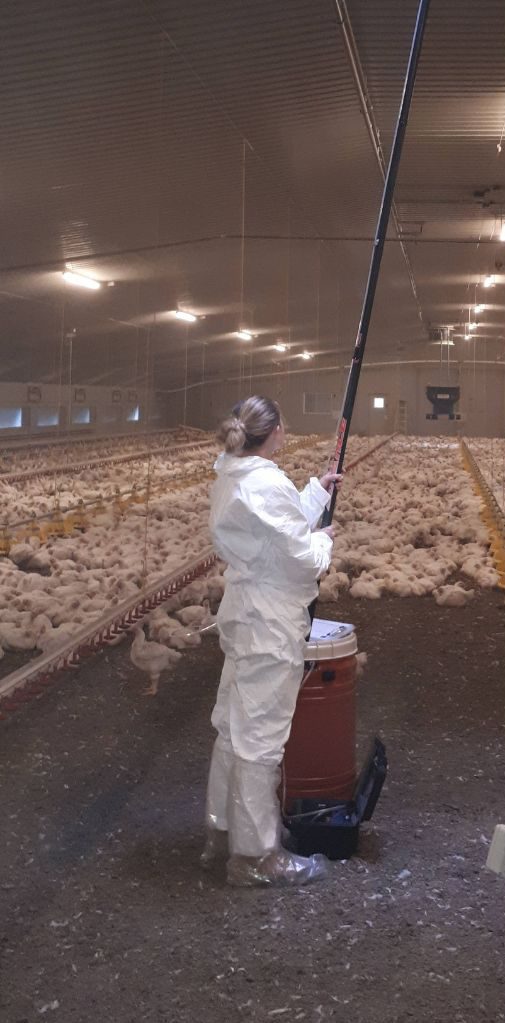
Odour management expert Silsoe Odours explores how to understand, handle and prevent odour complaints.
Unpleasant odours can impact the health and well-being of those who live and work nearby. Facilities that emit odours will often have an odour condition in their operating permit. Your permit may specify acceptable levels of odour emissions, as well as protocols for responding to odour complaints. It is important to know how to handle these complaints, so that you can maintain a safe and comfortable environment for everyone. Doing so will also help you to meet your statutory obligations. As a result, you may avoid potential fines and legal consequences.
This article goes into detail about common sources of odour complaints, as well as practical solutions to prevent and manage them. By following these tips, you can be better prepared to handle odour complaints and protect the well-being of those around you.
Common sources of odour complaints
There are many industries which emit odours as part of their operations. The most common causes of complaints include;
- wastewater treatment plants
- food processing facilities
- waste management, landfills and composting sites
- agricultural operations
- chemical manufacturing plants
- commercial and restaurant kitchens.
Operators in these industries need to get the proper permits and comply with environmental regulations. Councils must look into odour complaints that could be a statutory nuisance.
Why is it important to address odour complaints?
If your site does anything that emits odours, you might get the odd complaint from people who live or work nearby. Even if it is just one complaint, it is important to investigate. If it is a valid problem and you don’t do anything about it, things could get worse. Failing to address odour issues can lead to several potential consequences. For instance, odours can affect people’s health and quality of life, which can hurt your relationship with the community. In turn, this can damage your site’s reputation. Additionally, violating your operating permit could result in fines and legal repercussions. All these things can take up a lot of time and money.
For every odour complaint you receive, there could be more than 250 negative contact points.

The consequences of failing to control odour: an example
In 2023, A North East company was fined almost £26,000 for failing to control odour and violating its environmental permit. The company faced legal action from the Environment Agency after receiving odour complaints from the public. This case highlights the importance of having a strong odour management strategy in place, as well as being equipped with the knowledge and tools necessary to prevent and address odour complaints.
Challenges in validating complaints
It can sometimes be difficult to address odour complaints because odours are subjective. The perception of an unpleasant odour can vary from person to person. Also, it can be hard to identify the source of an odour. Usually, this happens if there are a few different possible sources, or if the odour occurs over a large area. It can also be difficult to pinpoint the source of sporadic odour emissions. Sometimes, investigating an odour complaint can take a lot of time and resources. Even so, it is imperative to address complaints to avoid permit restrictions and legal consequences.
Your first step is to conduct odour sampling and surveys. This type of investigation will help you to understand the nature of the emissions. At Silsoe Odours, our odour consultants will help you figure out the best way to solve the problem. We will guide you on the best approach for your needs.
HANDLING ODOUR COMPLAINTS
Appoint appropriate personnel
Having a consistent person or team to manage odour complaints offers several advantages. For instance, they will know the details of previous complaints. This gives them a better understanding of possible issues, as well as effective methods to resolve them. A consistent liaison person also fosters trust within the local community. A recognisable face demonstrates accountability, prevents misunderstandings and helps build positive relationships. Furthermore, a centralised team is better equipped to maintain complaint-handling records. This is helpful if you need to show your actions to the regulator or in court.
Objectives when handling complaints
When you receive an odour complaint, you should have three main objectives. Firstly, you must assure the complainant that you are taking the issue seriously. Doing so can help you maintain positive community relationships. Secondly, investigate the complaint to determine its legitimacy. Finally, if you find the complaint to be valid, you should take prompt corrective action to address the issue. Your specific actions will depend on your site. That said, we have outlined a simple and effective approach you can follow.
How to respond to odour complaints
- Acknowledge and Understand the Complaint. Begin by acknowledging the complainant’s concerns and assure them that you will investigate the manner. Gather information about the time, location and nature of the odour. This will help you to identify the potential problem. If the Environment Agency becomes involved, they will also follow similar steps. You may find the Odour Complaint Report form in their H4 Odour Guidance helpful.
- Investigate. Investigate the complaint promptly and thoroughly. Conduct odour sampling and surveys to determine the source and nature of your odour emissions. You can also use the results to confirm whether your odour abatement equipment is working as it should be. We recommend seeking support from an experienced odour consultancy to ensure your investigation is effective. You can contact Silsoe Odours for guidance.
- Communicate the Findings. Communicate the findings of the investigation to the complainant. Explain how you plan to resolve the issue and the expected timeframes. By demonstrating transparency and accountability, you can build trust and positivity. In some cases, you may also be required to do this as part of your permit stipulations.
- Resolve the Issue. Take action to fix the problem. For example, you might need to change some of your processes and operating practices. You could also install or update odour control equipment and ventilation systems. Put in place best practices to maintain and check the changes made. You should have an Odour Management Plan which outlines how you manage odours on your site. This will form part of your ongoing permit compliance actions.
- Close the Complaint. Lastly, you can take steps to close the complaint. Let the complainant know that the issue has been resolved. You may find it helpful to ask them for feedback on how you handled the issue. This can provide valuable insights for possible improvements. Update your records to show that you have resolved the complaint and archive related documentation. Remember, it is important to keep detailed records of all complaints.
PREVENTING ODOUR COMPLAINTS
The importance of regular monitoring and maintenance
One of the most effective ways to prevent odour complaints is to make sure your odour management practices are in tip-top shape. Designing effective odour control systems and processes is important. But, one of the most common mistakes operators make is to not track these systems once they are in place. Regular odour monitoring allows you to spot when things start to go wrong. This means that you can rectify them before they cause major problems. With this in mind, establish regular maintenance and cleaning procedures to ensure all your odour control equipment is working. You should also develop an odour management plan that includes best practices for managing emissions. For example, regular sniff surveys and odour sampling can be valuable tools.
Community engagement
We have outlined the importance of effective communication with complainants. You can also enhance your relationship with the wider community by creating an open dialogue. Publicise any changes to processes or systems that may affect odour emissions. When there are problems, provide updates on how you have solved them. Give details of the person or team responsible for odour complaints. You should also make sure that they are easy to contact. By being transparent and accessible, you may even receive informal reports of odour issues before they escalate into formal complaints.
It is crucial to understand, handle and prevent complaints. If you follow the practical solutions we have outlined in this article, you can:
- manage and prevent odour issues
- protect the well-being of your community
- comply with your statutory obligations.
For more advice from our experienced team of odour consultants, call 01525 860222, email info@silsoeodours.co.uk, or visit our website.






